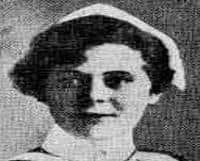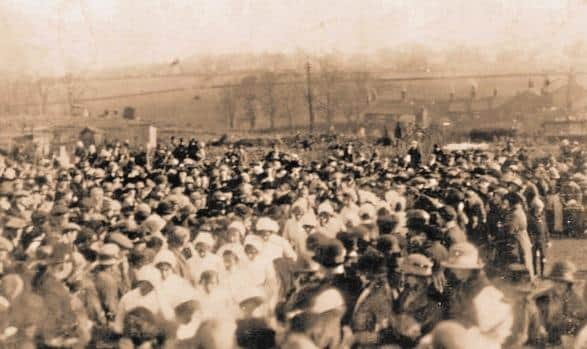This brutal Sheffield murder from 1923 when a young mental health nurse was butchered by a mother-of-four who had become besotted with her shocked the city
and live on Freeview channel 276
Rose Artlisse, a 33-year-old mother-of-four had been a patient at Wadsley Asylum and was released, after being declared sane two years earlier.
Whilst there, she had developed a deep friendship with one of the nurses, 24-year-old Ada Bradley, even moving in to the home she shared with her parents in Worrall Road, Wadsley, some months before the murder, on April 11, 1923.
Advertisement
Hide AdAdvertisement
Hide AdBeing almost 100 years ago, and attitudes towards sexuality being much more conservative, there is no reference to whether there was an amorous element to the two women’s friendship, but the relationship certainly soured when a man came on the scene.


In the early hours, Ada was making her way to work and, as had become their routine, Artlisse was accompanying her.
Then, suddenly, without warning or provocation, she pulled out a hammer and struck the nurse five times to her head. Then, as she lay dying, she cut her throat from almost ear to ear with a razor.
The first person on the scene was a train driver, who was passing the junction of Langsett Avenue and Middlewood Road.


Advertisement
Hide AdAdvertisement
Hide AdSpeaking to the Sheffield Telegraph in a report published the following day, he said: “As I was driving my car from the Middlewood Terminus to the city, I was amazed and horrified to see the body of a woman lying on the causeway at the bottom of Langsett Avenue. Another woman was standing over the body. A razor protruded from the side pocket of the woman who was standing, and a few yards away a large hammer was lying on the ground.
“I and my mate quickly stopped the car and rushed to the spot. The woman made no effort to escape but continued to stand over the prostrate woman who was lying quite still. There were a number of ugly bruises on her forehead and temple; her throat was terribly gashed, and blood was flowing freely. It had saturated her clothing and had made a pool on the pavement.”
The two men detained Artlisse at the scene until police arrived and took her to the Hillsborough Police Station nearby, where she was charged with murder.
While in custody, Artlisse asked if Ada was dead and, when officers told her that she was, she replied, “That will do.”
Advertisement
Hide AdAdvertisement
Hide AdProblems seemed to have come between the two women when Ada met a soldier from the Coldstream Guards who would regularly visit when on leave from his base in London.
Then, when Corporal Walter Cooper popped the question, and the couple announced their intention to marry later in the year and move to London, it seems to have tipped Artlisse over the edge and, fearing that she would lose Ada for good, decided to kill her.
While awaiting her murder trial, she wrote to Ada’s parents, effectively saying that it was the only way she could think of to punish them both.
At her trial at Leeds Assizes in May 1923, the jury said that Artlisse was “guilty but insane” and the judge sent her down “until his Majesty’s pleasure be known”.
Advertisement
Hide AdAdvertisement
Hide AdAnd, chillingly, her final remark to the judge was: “Thank you very much, sir; I was guilty, but I was sane”, before calmly making her way down to the cells.
According to records, Artlisse lived on until 1973, when her death was recorded in Berkshire, very close to the Broadmoor high security psychiatric hospital, where it is believed she spent the remaining 50 years of her life.
Editor's message: Thank you for reading this story. The dramatic events of 2020 are having a major impact on our advertisers and thus our revenues. The Star is more reliant than ever on you taking out a digital subscription to support our journalism. You can subscribe here www.thestar.co.uk/subscriptions for unlimited access to Sheffield news and information online. Every subscription helps us continue providing trusted, local journalism and campaign on your behalf for our city.